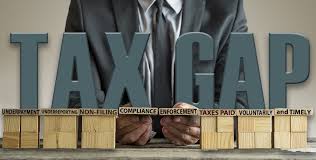Capital Assets under Tax Law
Capital Assets under Tax Law
1. What Are Capital Assets?
Under tax law, capital assets are broadly defined as property owned by a taxpayer, whether tangible or intangible, held for investment or personal use. The classification of an asset as a capital asset affects how gains or losses from its sale or disposition are taxed.
Key point: Capital assets are generally assets not used in the ordinary course of business or not inventory.
2. Definition and Scope
The Internal Revenue Code (IRC) defines capital assets broadly but excludes certain types of property. While the IRC provides detailed rules, in case law, courts have interpreted these definitions to clarify what constitutes a capital asset.
Typical Examples of Capital Assets:
Personal property (e.g., a family home, car)
Stocks and bonds
Real estate held for investment
Business property held for investment (not used actively in business)
Non-Capital Assets (Excluded):
Inventory or property held primarily for sale to customers
Accounts or notes receivable from sales or services
Depreciable property used in business (Section 1231 property)
Certain copyrights, publications, or creative works held by their creators
3. Importance in Tax Law
The classification matters because capital gains and losses are treated differently from ordinary gains and losses for tax purposes:
Capital gains may be taxed at preferential rates.
Capital losses are subject to specific limitations.
Ordinary gains and losses are fully taxable or deductible against ordinary income.
4. Case Law on Capital Assets
Case 1: Commissioner v. Duberstein (1960)
Facts: The case centered on the characterization of a transfer as a gift or taxable income.
Holding: Although not directly about capital assets, the case established the principle that substance over form matters in tax law, which is relevant when classifying assets.
Significance: Demonstrates the courts' focus on the purpose and nature of the asset or transaction.
Case 2: Commissioner v. Gillette Motor Transport, Inc. (1955)
Facts: The taxpayer sold trucks used in its business and argued the proceeds were capital gains.
Holding: The court held that trucks used in business are Section 1231 property, not capital assets, so gains are treated differently.
Significance: Clarifies that assets used in the business are generally not capital assets.
Case 3: Corn Products Refining Co. v. Commissioner (1955)
Facts: The taxpayer argued that inventory losses should be treated as capital losses.
Holding: The Supreme Court held inventory is not a capital asset, so losses are ordinary losses.
Significance: Reinforces that inventory and property held for sale to customers are excluded from capital assets.
Case 4: Mayo Foundation for Medical Education & Research v. United States (2011)
Facts: Though primarily about tax-exempt status, the case touched on statutory interpretation.
Holding: Courts must interpret tax law carefully, looking at statutory language and legislative intent.
Significance: Reinforces judicial approach in interpreting tax provisions including capital asset definitions.
5. How Capital Assets Are Treated in Taxation
A. Capital Gains and Losses
When a capital asset is sold for more than its basis, the difference is a capital gain.
When sold for less, the difference is a capital loss.
Capital gains can be short-term (held ≤ 1 year) or long-term (> 1 year), affecting tax rates.
B. Basis of Capital Assets
Usually the purchase price plus improvements, minus depreciation.
Determines gain or loss on sale.
6. Common Issues in Capital Asset Classification
Business use vs. investment: Property used in business may not be capital assets.
Personal use property: Personal residence is a capital asset, but special rules apply (like exclusion on gains).
Inventories vs. investments: Inventory held for sale is not capital asset.
Intangible assets: Stocks and bonds are capital assets, but some intangibles created in the business are not.
7. Summary Table
| Aspect | Capital Asset | Non-Capital Asset |
|---|---|---|
| Definition | Property held for investment or personal use | Inventory, business property used in operations |
| Examples | Stocks, personal home, bonds | Business equipment, accounts receivable |
| Tax Treatment | Capital gains taxed preferentially | Ordinary income or loss |
| Case Example | Commissioner v. Gillette Motor Transport (business property not capital asset) | Corn Products Refining (inventory excluded) |
8. Conclusion
Capital assets are a fundamental concept in tax law because their classification affects the tax treatment of gains and losses. Courts carefully analyze the nature of the asset and its use by the taxpayer, differentiating between investment/personal property and assets used in the ordinary course of business.
The key takeaway is that not all property owned by a taxpayer is a capital asset, and knowing the distinction is crucial for correct tax reporting and planning.










0 comments